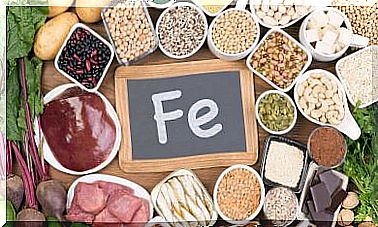Ketogenic Diet: Benefits And Risks
The ketogenic diet is based on limiting carbohydrates to 10% or less. This strives for a certain metabolic state, so-called ketosis. Because in this way, alternative metabolic pathways for burning fat are activated.

The ketogenic diet is a very low-carbohydrate form of dietary nutrition. Here the body is a kind of fat burning machine. This is said to have potential weight loss benefits. It should also be beneficial to health and good for athletic performance. There are now many people who have already tried the ketogenic diet .
However, in addition to the benefits, there are also some risks to consider. Because this type of diet can seriously endanger your health. You can find out more about this in this article.
What is the ketogenic diet?
With the ketogenic diet , you reduce carbohydrates extremely or do without them completely. As a result, the body is supposed to reach a certain metabolic state: the so-called ketosis. And so there can be weight loss. Because the body now uses fats as an energy source.
In the state of ketosis, the body is deprived of carbohydrates. This is what the body normally uses as the primary source of glucose to make energy. But now he is forced to do the following: He has to get the energy he needs from fat metabolism.
When carbohydrates are removed from the body, it uses the glycogen stored in the liver as its first resource. In doing so, the organism begins to use fatty acids for energy production. He converts these into so-called ketone bodies. However, their massive release can be dangerous for some organs.
Ketogenic Diet: Description

The proportion of carbohydrates on a ketogenic diet is usually well below the recommendation of 50 to 60% of total calories. In contrast, the ketogenic diet typically provides around 10% or even less.
Then there are also different types of the ketogenic diet. Some allow the consumption of fruit and vegetables. However, only in very controlled quantities. Others, however, have completely eliminated all sources of carbohydrates. And the consumption of grain, flour and baked goods is prohibited. The same goes for fruits, vegetables, and legumes.
There are also other types of ketogenic diets. For example, some use fasting. One would like to additionally promote the initial formation of ketone bodies. Later this must be maintained. Because this is the only way to achieve weight loss by burning fat.
So, as you can see, the ketogenic diet comes in different forms. But they are all geared towards one thing: to stimulate the burning of fats in the body in order to create ketone bodies.
What are the risks with this type of diet?
1. You eat less fruits and vegetables

Most ketogenic diets greatly reduce the intake of vegetables and fruits. As a result, the body only receives a minimal supply of vitamins, minerals and fiber. Because these are particularly common in these foods. But if you still want to follow this type of diet, the problem can be solved relatively easily: For example, by taking a vitamin supplement.
2. You take in less fiber
Another risk with this type of diet arises from the reduced intake of fiber. As a result, this usually leads to blockages. Hence, it is advisable to take some type of laxative. This can be mallow, for example.
3. Ketogenic diets can lead to bad breath

Bad breath is also a typical side effect of these diets. Because due to the high production of ketone bodies, there is then unpleasant bad breath. Additionally, some studies suggest that a ketogenic diet makes you feel tired or fatigued. The cause seems to be the lack of carbohydrates.
4. Possible negative effects on intellectual performance
The ketogenic diet forces the brain to use ketone bodies. Because it has to replace its actually preferred “fuel”, namely glucose. This can affect cognitive performance. At least according to some studies by US scientists.
5. Adhering to the ketogenic diet is not easy
Many believe that ketogenic diets are easier to follow than non-ketogenic diets. But studies show exactly the opposite. Because the permitted foods are severely restricted: You are not allowed to consume any grain or bread. Neither do legumes, fruits or vegetables. This makes it difficult to adhere to and follow such a diet.
6. Ketoacidosis can occur
In extreme cases, a ketogenic diet can lead to what is known as ketoacidosis, when the ketone bodies in the blood multiply massively. This can cause organ damage. Or it can even lead to a coma.
Therefore, two things are particularly important for this type of diet : First, you should be in good general health. And on the other hand, you should carry out regular checks with healthcare professionals. Otherwise it can lead to serious health problems; for example, if you have kidney or liver failure.
So better be careful than sorry!
In addition to the risks of a ketogenic diet listed above, there are also some risk groups. They should rather avoid this type of diet. This includes:
- People with liver or heart problems. In some cases, for example, cardiac arrhythmias developed.
- Pregnant or breastfeeding women also belong to the risk groups.
- Likewise people with renal insufficiency.
It is also important to remember that the ketogenic diet is not a diet that can be followed for a lifetime or that promotes a healthy lifestyle. Because it is not a matter of a balanced diet. Rather, it is a possible but time-limited alternative to weight loss and the breakdown of fat.
Finally, let me say this: For every nutritional plan that you want to try, it is important to see a specialist. Because they can correctly assess your current state of health and give you competent advice and check your progress.









